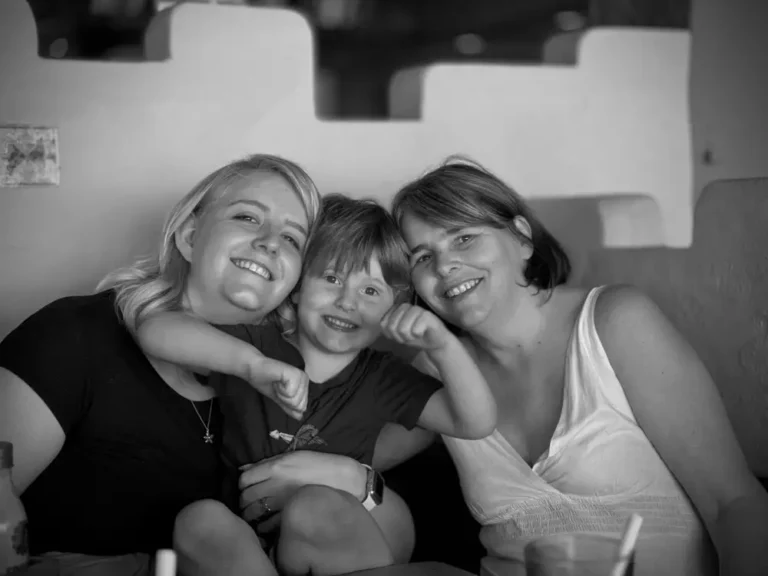California’s psychiatric bed shortage is blamed for failure to keep mentally ill from hurting themselves, others

‘None of us are walking on water, mistakes happen,’ says Steve Lindley, former chief of California’s Bureau of Firearms
The voices were the first to appear.
Kevin Cataneo Salazar, according to his mother, heard them before allegedly shooting down a Los Angeles County sheriff’s deputy on Sept. 16 in Palmdale.
Leonard Patton heard them and was persuaded to fly from his home in Minnesota to Orange County, where he bludgeoned to death a mother of two in 1994.
According to published reports, both of their families attempted to get them help. But then disaster struck.
Violence is frequently preceded by psychosis. There are numerous red flags. Experts in law enforcement, mental health, and gun laws, however, point to flaws in the system designed to protect society from those whose mental illness drives them to attack.
To be sure, the vast majority of severely mentally ill people do not engage in violent behavior. According to researchers, mental illness accounts for only about 4% of all violence and even less of gun violence.
But when it does happen, the consequences are devastating, and the outcry is loud.
‘Mistakes happen’
“There’s no silver bullet,” said Steve Lindley, senior program manager at the gun-control organization Brady United and former director of California’s Bureau of Firearms. “None of us are walking on water, mistakes happen.”
Many people’s first stop when dealing with a relative or friend who is exhibiting violent or troubling behavior as a result of mental illness is the police. Officers may detain the individual under section 5150 of the state Welfare and Institutions Code if they believe he or she is a danger to themselves or others.
Police say determining which of the mentally ill qualify for detention is a Herculean task.
“You can’t see inside someone’s head, you can’t see the future,” said Jim Bueermann, former Redlands police chief and founding member of the American Society of Evidence-Based Policing. “You can approach someone on the street who appears to be calm… And then, 30 minutes later, we’re back there, in the same spot, and he’s flipped out.”
According to Bueermann: “The whole thing is a balancing act … protecting their dignity, their rights and the public safety.”
Not enough beds
Police are frequently dispatched with a crisis assessment team comprised of clinicians to assist in determining the person’s level of danger. Experts say that many times, responders are hampered from the start. Police and social workers are aware that there are not enough beds to house those brought in under the 5150 code for a 72-hour evaluation.
“It’s a damnable position to be in,” said Steve Pitman, president of the Orange County chapter of the National Alliance on Mental Illness. “Generally, in Orange County, there are no beds.”
Experts trace the lack of statewide psychiatric beds back to the 1960s and the decision to close some state-run mental hospitals in favor of community-based treatment, which was inadequate.
According to the California Hospital Association, there were 6,072 psychiatric beds in the state in 2018, a decrease from 9,353 in 1995. California has fewer hospital beds available for in-patient psychiatric care than the national average.
According to experts, the shortage is so severe that in many cases, people who need to be detained are not taken in at all. And the majority of those who are detained are not detained for the full 72-hour evaluation period.
Brief Commitments
Bueermann, who worked for Redlands from 1978 to 2011, recalls that in San Bernardino County, very few people who were brought in were actually convicted.
“More often than not, they were released within the same eight hours that we took them over there,” he stated.
Few of those who are committed are kept for more than three days.
In fiscal 2020-21, 120,402 adults were held for three days, according to the state Department of Health Care Services. According to the statistics, 48,292 people were detained for 14 days, while only 3,299 were detained for 30 days.
“I’ve seen a lot of people who don’t know whether it’s day or night outside getting released,” said Chuck Michel, an attorney and president of the California Rifle and Pistol Association.
According to Michel’s, a gun law expert, anyone committed for 72 hours on a psychiatric hold in California is barred from purchasing or possessing a firearm for five years. If a person is convicted twice within a 12-month period, the firearm ban is permanent, according to Michel.
Background check flaws
Salazar’s mother, Marle, said her son was diagnosed with paranoid schizophrenia about five years ago, had been hospitalized twice for mental illness, including at least once involuntarily, and had planned to kill himself.
So, how did he legally obtain a gun, as authorities claim?
Investigators are attempting to determine the veracity of Marle Salazar’s claim, as well as whether the gun he purchased was the same one used in the fatal shooting.
Meanwhile, gun experts claim that the system for checking backgrounds to buy firearms is not always accurate.
The first is the form that the buyer fills out at the point of sale. Was the information provided correct?
“When someone is having a mental health crisis, the information they provide is not always accurate,” Lindley stated. “If they check that box, the sale of firearms is halted.” But, as you are aware, people lie a lot.”
The identification provided is used to conduct the background check. To determine whether the buyer is eligible for the gun purchase, the state system consults other government databases. However, the system’s success is dependent on the data.
Was the psychiatric hospital required to report the 5150 hold to the state Department of Justice? Is the identification correct? Or, as Michel claims, are the DOJ databases tainted with incorrect information?
“The record system, the databases, the government is not doing a good job of maintaining these databases,” Michel stated.
Lindley admitted that mistakes do occur with the database, but only infrequently.
“Did (mistakes) happen a couple of times when I was chief?” Yes. “What we found more often was that the gun dealer released the firearm to the person even though the person was prohibited,” Lindley said. “Humans make mistakes from time to time.” There are times when they simply want to make money.”
The state also runs the Armed and Prohibited Persons System, which monitors gun owners and searches databases to see if someone who currently owns a firearm has since become ineligible, such as due to a mental illness hold. These occurrences are referred to as “triggering events.”
As of Jan. 1, 2023, 4,837 people were prohibited from owning or possessing a firearm due to a mental health triggering event, according to the state Department of Justice. The system went into effect in 2006.
Gun restraining orders are rarely used
Another method for keeping guns out of the hands of potentially dangerous people is to use gun violence restraining orders, which are permitted under California’s red flag law.
Individuals can seek a court order restraining someone from possessing a gun under this law if he or she is at high risk of abusing it but has not committed a crime or qualifies for a mental health hold.
According to experts, the red flag system is quite effective, but it is underutilized by police and the general public.
Two-thirds of the 2,870 people polled in a 2020 study by the Violence Prevention Research Program at UC Davis Health had never heard of the gun violence restraining order process.
Temporary and emergency restraining orders can be issued for up to three weeks. However, after a hearing and review of the evidence, a judge can extend the order for up to five years.
More than 80% of UC Davis survey respondents said they would use the process if a family member threatened to harm themselves or others.
Is there a lack of due process?
According to Michel, anti-gun groups have weaponized the red flag process.
“The problem with the red flag law is there’s not due process,” he stated. “They’re rubber-stamped.”
It’s unclear what Salazar’s family did to get him help or keep him away from guns. He has pleaded not guilty due to insanity. Leonard Patton used the same defense when he was found not guilty by reason of insanity in 1997 and committed to a state mental hospital.
Patton’s release to an outpatient facility for further treatment is being considered by an Orange County judge.





